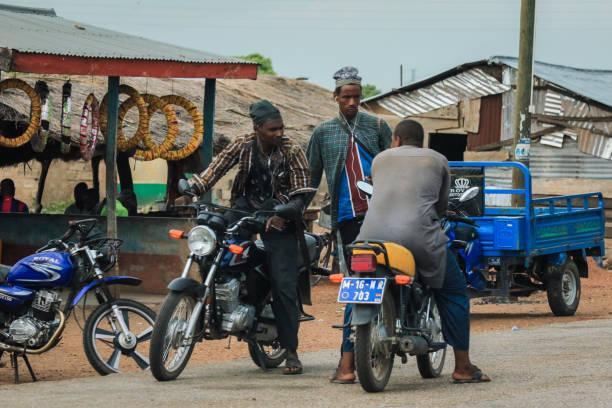Africa’s Two-Wheeler Market Shifts to Efficiency

Q1. Could you start by giving us a brief overview of your professional background, particularly focusing on your expertise in the industry?
I have 15 years of experience in the Automotive industry in Africa and India, leading B2B & B2C Operations in Sales, after-sales, and spare parts distribution.
My most recent experience includes building a Two-wheeler business for a leading Indian manufacturer operating in 14 countries in Africa, generating over $20 million in annual revenue. I oversee the development and sustenance of a comprehensive ecosystem for Import, Assembly, Sales, Service & Spare Parts distribution in each country, facilitating rapid volume growth & market share gains in Africa's booming two-wheeler industry.
Before that, I worked as a Territory Manager with leading Indian & Japanese Car OEMs in India, where I consulted with more than 100 car dealers across 20+ cities in India to grow their top and bottom lines from their Car retail business. I managed an annual revenue account of $5 Million+ with double-digit growth YoY.
My core expertise includes International Business Development, Exports, Sales, Network Expansion, New Market Entry strategy, After-Sales Management, Operations Efficiency Improvement, Marketing, Team management & Stakeholder Management.
Q2. How are consumer preferences shifting—are buyers leaning more toward fuel efficiency, durability, or aspirational features?
In emerging markets like Africa, consumer preferences are rapidly changing in sync with changing local macroeconomic conditions. While durability has always been & remains at the core preference, there is a significant increase in demand for fuel-efficient and feature-packed vehicles.
A preference for more fuel-efficient vehicles has paved the way for EVs in the two-wheeler industry. Consumers have started to realize the lower cost of ownership & more savings by switching from traditional technology (ICE) to new technology (EV). EV 2-wheeler sales grew by a whopping 80% from 2021 to 2024 in Sub-Saharan Africa. The current share of EV sales in total two-wheeler sales is 1% which is estimated to be 20% by 2030, despite numerous challenges to EV adoption.
The African motorcycle industry is experiencing a significant surge in demand from Gen Z consumers. This generation of smartphone aficionados & internet-savvy consumers looks for added features like Bluetooth connectivity and a Touch-enabled dashboard in the motorcycle. Connected technology, such as IoT, will soon be introduced to the industry as consumer preferences evolve.
Q3. How are import policies, tariffs, and currency fluctuations shaping market entry and expansion decisions?
Import policies, Tariffs, and Currency fluctuations vary drastically across different regions of Africa. Countries in Eastern & Southern Africa have a comparatively more stable economic and political environment and have been preferred locations for Global OEMs to enter, operate in & expand regionally in a predictable, risk-calculated approach. On the other hand, countries in Western & Central Africa pose a more turbulent business environment due to frequent currency fluctuations, political instability, and limited geographic accessibility.
Companies contemplating entering new markets or expanding regionally look for markets falling under Regional trade blocks, such as ECOWAS, EAC, SADC, and COMESA, which facilitate the tariff-free or subsidized movement of goods within member countries.
Q4. Which countries in your region are contributing the largest share to total two-wheeler demand, and what’s their approximate share?
Nigeria, DR Congo & Kenya are the Top-3 markets by industry size. These three countries account for approximately 40% of the continent's total annual two-wheeler demand.
Q5. What would you say are the biggest competitive advantages for global OEMs operating in the Africa markets today?
Global OEMs operating in Africa have access to markets with a high growth rate of the consumer base, access to untapped business opportunities arising from increasing urbanization, and access to an abundant workforce with favorable labor costs. If a favorable local business environment complements these competitive advantages, the Global OEMs have a strong opportunity in the near future to develop Africa as their regional hub for Exports.
Q6. Over the last 2–3 years, which brands have gained noticeable market share, and what do you think drove that shift?
The African two-wheeler industry has been traditionally dominated by Chinese brands, followed closely by Indian and Japanese brands. Over the last 2-3 years, Indian players such as Bajaj, TVS & Hero have gained significant market share by positioning themselves more competitively in terms of Price, Product Quality, After-sales support, & Geographic presence. Japanese brands, such as Honda & Chinese brands, like Haojue, have also made significant investments in Price competitiveness & Product Quality, posing tough competition to Indian brands.
Q7. If you were an investor looking at companies within the space, what critical question would you pose to their senior management?
As an Investor contemplating investment in companies or startups in Africa, I will be aiming for high RoI in a short timeframe. I will be keen to understand from their senior management the market opportunity, scalability of the business model, scope of innovation in the product, strengths & weaknesses of their leadership team, their unique competitive advantage & their past financial track record.
Comments
No comments yet. Be the first to comment!
